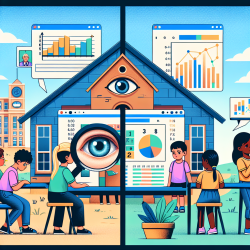Introduction
Selective Mutism (SM) is a complex childhood anxiety disorder characterized by a child's inability to speak in certain social settings despite speaking comfortably in others. Recent research, including the meta-analysis titled "Anxiety in Children with Selective Mutism," highlights the intricate relationship between SM and anxiety disorders, particularly social phobia. Understanding these connections can significantly enhance therapeutic approaches and outcomes for children affected by SM.
Key Findings from the Meta-analysis
The meta-analysis conducted by Driessen et al. (2020) aggregated data from 22 studies involving 837 children diagnosed with SM. It revealed that a staggering 80% of these children were also diagnosed with an additional anxiety disorder, with social phobia being the most prevalent at 69%. These findings underscore the non-discrete nature of SM and anxiety disorders, suggesting that they often coexist and may share underlying mechanisms.
Implications for Practitioners
For practitioners in speech language pathology and related fields, these findings emphasize the importance of a comprehensive assessment strategy. Here are some actionable steps practitioners can take:
- Holistic Assessment: Incorporate tools that assess both speech and anxiety levels. Consider using validated anxiety scales alongside speech assessments to gain a full picture of the child's condition.
- Interdisciplinary Collaboration: Work closely with psychologists and other mental health professionals to address the multifaceted nature of SM. This collaboration can lead to more tailored and effective intervention plans.
- Family Involvement: Engage with families to understand the child's behavior across different settings and to implement consistent strategies at home and in school.
Encouraging Further Research
The meta-analysis also highlights significant heterogeneity in the prevalence of anxiety disorders among children with SM, indicating a need for further research. Practitioners are encouraged to contribute to this body of knowledge by documenting and sharing case studies and treatment outcomes. Additionally, exploring the role of environmental and genetic factors in SM could provide deeper insights into its etiology.
Conclusion
The relationship between SM and anxiety disorders presents both challenges and opportunities for practitioners. By leveraging the insights from recent research, professionals can enhance their practice and improve outcomes for children with SM. Embracing a data-driven approach and fostering interdisciplinary collaboration are key steps toward achieving this goal.
To read the original research paper, please follow this link: Anxiety in Children with Selective Mutism: A Meta-analysis.










